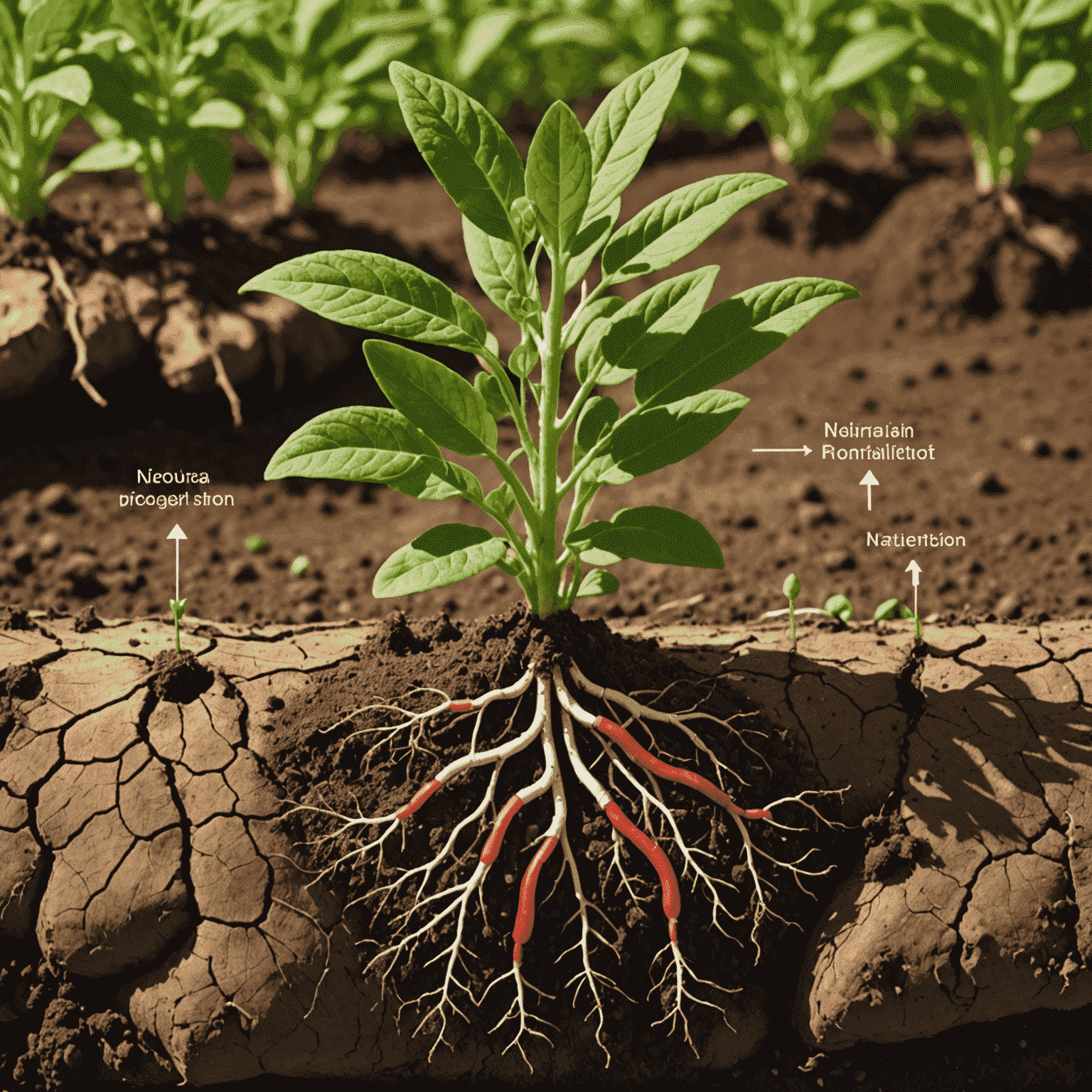Nitrogen-Fixing Plants: Nature's Fertilizer Factories

In the intricate dance of nature, some plants have developed a remarkable ability: they can convert atmospheric nitrogen into a form that's usable by living organisms. These nitrogen-fixing plants are the unsung heroes of our ecosystems, playing a crucial role in soil health and natural fertilization.
The Magic of Nitrogen Fixation
Nitrogen is an essential element for life, a key component in amino acids, nucleic acids, and chlorophyll. While nitrogen gas (N₂) makes up about 78% of our atmosphere, most organisms can't use it in this form. This is where nitrogen-fixing plants come into play, acting as nature's own fertilizer factories.
How Does It Work?
Nitrogen fixation occurs through a symbiotic relationship between certain plants and bacteria. The most common nitrogen-fixing bacteria are Rhizobia, which form nodules on the roots of legumes. Inside these nodules, the bacteria convert atmospheric nitrogen into ammonia (NH₃), which the plant can then use to build essential molecules.

Types of Nitrogen-Fixing Plants
While legumes are the most well-known nitrogen fixers, they're not the only plants with this ability. Here are some instancess:
- Legumes: Peas, beans, clover, alfalfa
- Actinorhizal plants: Alder trees, bayberry, sea buckthorn
- Azolla: A floating fern often used in rice paddies
- Cyanobacteria: Not plants, but important nitrogen fixers in aquatic environments
Ecological Importance
Nitrogen-fixing plants are ecological powerhouses. They:
- Improve soil fertility naturally
- Reduce the need for synthetic fertilizers
- Support biodiversity by enriching ecosystems
- Help in land reclamation and erosion control
- Play a crucial role in the global nitrogen cycle
Harnessing Nature's Wisdom
Understanding and utilizing nitrogen-fixing plants can lead to more sustainable agricultural practices and ecosystem management. By incorporating these plants into crop rotations, agroforestry systems, and restoration projects, we can work with nature to maintain soil health and reduce our reliance on synthetic inputs.

Conclusion: Nature's Ingenious Solutions
Nitrogen-fixing plants remind us of the incredible adaptations that have evolved in nature. They exemplify the intricate relationships between different organisms and the atmosphere, showcasing how life on Earth has developed solutions to fundamental challenges. As we continue to explore and understand these natural processes, we open doors to innovative, sustainable practices that can help us address modern environmental challenges.
By studying and appreciating nitrogen-fixing plants, we not only gain valuable scientific knowledge but also cultivate a deeper connection to the wonders of the natural world around us.